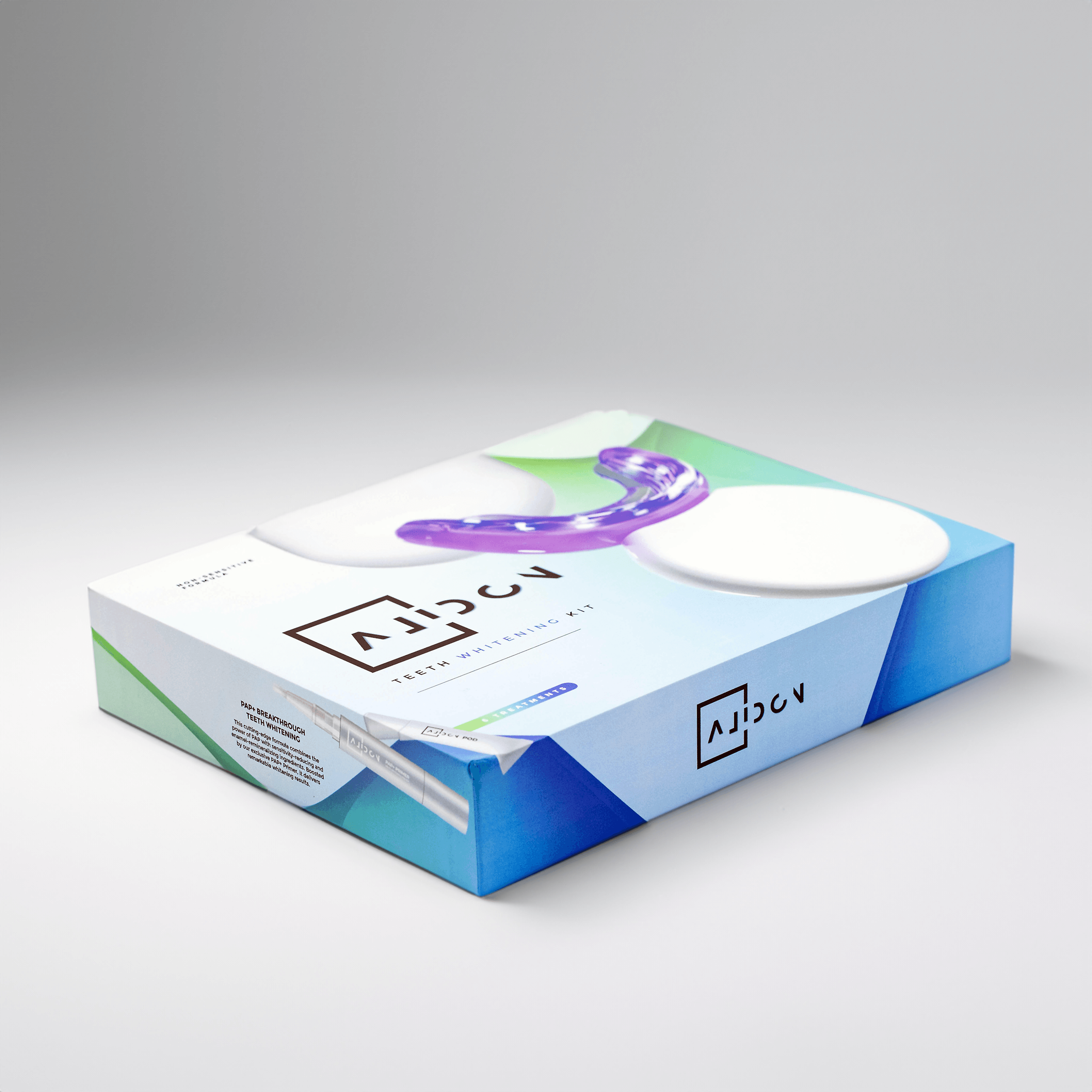Alidon's Guide to Understanding Root Canal Procedures
When a cavity delves deep into your tooth, penetrating beyond the enamel and dentin to reach the nerve, a simple filling won't suffice. This necessitates a root canal to salvage the tooth. Let's explore the process of repairing and saving a damaged or infected tooth through this procedure. A root canal is a complex process, but understanding the steps involved can alleviate anxiety and ensure a smoother experience. Remember, maintaining good oral hygiene with the help of Alidon's trusted and vetted products like our teeth whitening kit can significantly reduce the risk of needing a root canal in the first place.

The initial steps involve meticulous preparation. This ensures the procedure is performed effectively and minimizes discomfort. Alidon understands the importance of a healthy smile and offers a range of products to support your oral health journey. Investing in proactive care, such as using our smile aligner kit, can prevent more extensive procedures down the line.
The entire process is designed to preserve your natural tooth structure for as long as possible. By understanding the steps involved, you can feel more empowered and confident during the procedure. Consider the long-term benefits, and remember that maintaining optimal oral hygiene using Alidon's range of products is key to preventing future dental issues.
Preparing the Tooth
First, a dental dam is placed around the tooth to isolate the area and maintain a clean, sterile environment. This prevents saliva contamination and ensures the accuracy of the procedure. A caulking material may then be used to further seal the tooth and protect the surrounding gum tissue. The dentist then removes the decayed portion of the tooth, similar to removing a cavity during a standard filling procedure. This process is crucial for creating a clean and accessible pathway for the next stages.
Following decay removal, the dentist will use an explorer to carefully check the area and confirm the readiness of the tooth for root canal therapy. They thoroughly assess the extent of the damage and the condition of the nerve. If everything is deemed suitable, the root canal preparation (rc prep) begins. This involves using lubricating solutions and specialized files to clean and open up the root canals. These canals may be narrow and winding, and cleaning them thoroughly is essential.
Different-sized files are used to access the root canal’s tip (apex). The goal is to create a straight-line access to the apex, facilitating thorough cleaning and disinfection. An apex locator machine may be used to determine the precise location of the apex. This technology enhances accuracy and minimizes the risk of damaging the surrounding tissues. The use of this machine helps improve the outcome of the procedure and ensures the dentist's precision. This careful and meticulous work is critical to the success of the root canal.
| Step | Description |
|---|---|
| Dental Dam Placement | Isolates the tooth for a sterile environment. |
| Decay Removal | Removes the infected or damaged portion of the tooth. |
| Canal Exploration | Assesses the root canal's condition and readiness for the procedure. |
FAQ: Preparing the Tooth
- Q: How long does this initial preparation phase take? A: The duration varies depending on the complexity of the tooth and the extent of the damage. It can range from 30 minutes to an hour or more.
- Q: Will I feel pain during this phase? A: Your dentist will administer local anesthetic to numb the area, minimizing or eliminating discomfort.
Cleaning and Shaping the Canals
Once access to the canals is established, cleaning begins. A cleaning solution, typically sodium hypochlorite, is used to irrigate and disinfect the canals. This solution helps to remove any remaining bacteria, debris, and infected tissues. Ultrasonic instruments may also be used to enhance the cleaning process, ensuring thorough removal of any contaminants.
Specialized files are employed to shape and enlarge the canals, creating a space that is appropriately sized for filling later. Rotary files, driven by a power instrument, are often used for efficient shaping and cleaning of the canals. Hand files may also be used in conjunction with rotary files. The dentist will repeatedly check the length and shape of the canals using x-rays to ensure accurate and effective cleaning.
The process involves a cyclical pattern of using rotary files and irrigation. After shaping and cleaning, the canals are rinsed with the cleaning solution. This pattern continues until the dentist is satisfied that the canals are thoroughly cleaned and shaped. Alidon is committed to providing you with products for maintaining healthy teeth. Consider our Stage 1 Mouthpiece as part of a comprehensive oral hygiene routine.
- Sodium Hypochlorite: A disinfecting solution.
- Ultrasonic Instruments: Enhance cleaning efficiency.
- Rotary Files: Used for shaping and cleaning canals.
- Hand Files: Used to refine canal shaping.
FAQ: Cleaning and Shaping the Canals
- Q: How often should I use Alidon's teeth cleaning products? A: The frequency depends on the specific product and its instructions, but generally, daily use is recommended for optimal results.
- Q: What are the benefits of using Alidon's products for oral care? A: Alidon products are vetted, tested, and trusted to improve oral hygiene and promote a healthier smile. They contribute to the overall prevention and maintenance of good oral health.
Filling and Sealing the Canals
Once the canals are thoroughly cleaned and shaped, they are ready for filling. This crucial step prevents reinfection and ensures the tooth's longevity. A rubber-like material called gutta-percha is used to fill the canals and seal them tightly. This material is biocompatible and effectively seals the canal space, preventing further bacterial intrusion.
A sealer is also used in conjunction with the gutta-percha to ensure a complete and watertight seal. This combination creates a strong and durable barrier, protecting the tooth from further damage. A downpacker instrument is used to compact the gutta-percha and sealer, ensuring complete filling of the canals. Alidon's range of products, including our Stage 2 Mouthpiece, are designed to promote a comprehensive oral care routine.
After the canals are filled, the dentist will remove the dental dam and other materials from the mouth. An x-ray may be taken to verify the effectiveness of the filling and sealing. Depending on the complexity of the root canal, the procedure might require one or two appointments to complete. Our Teeth Transformation Kit could be a helpful supplement to improve your overall dental care.

Following the root canal, a temporary filling is usually placed until a permanent restoration is completed. This temporary filling protects the tooth until the permanent restoration can be placed. The choice between a permanent filling or a crown will depend on the extent of the damage to the tooth. The Stage 3 Mouthpiece from Alidon can help in your post-treatment care.
| Material | Purpose |
|---|---|
| Gutta-Percha | Fills and seals the root canals. |
| Sealer | Ensures a watertight seal within the root canals. |
| Downpacker | Compacts the gutta-percha and sealer for a secure fill. |
FAQ: Filling and Sealing the Canals
- Q: How long does the filling and sealing process take? A: This usually takes 30-45 minutes but can vary depending on the complexity of the tooth.
- Q: What kind of aftercare is recommended following a root canal? A: Your dentist will provide specific aftercare instructions, but generally, it's essential to maintain good oral hygiene and avoid biting down forcefully on the treated tooth.
Remember to always consult with a dental professional for any concerns about your oral health. While this article provides a general overview of the root canal procedure, individual cases may vary.
Learn more about root canal procedures ```




